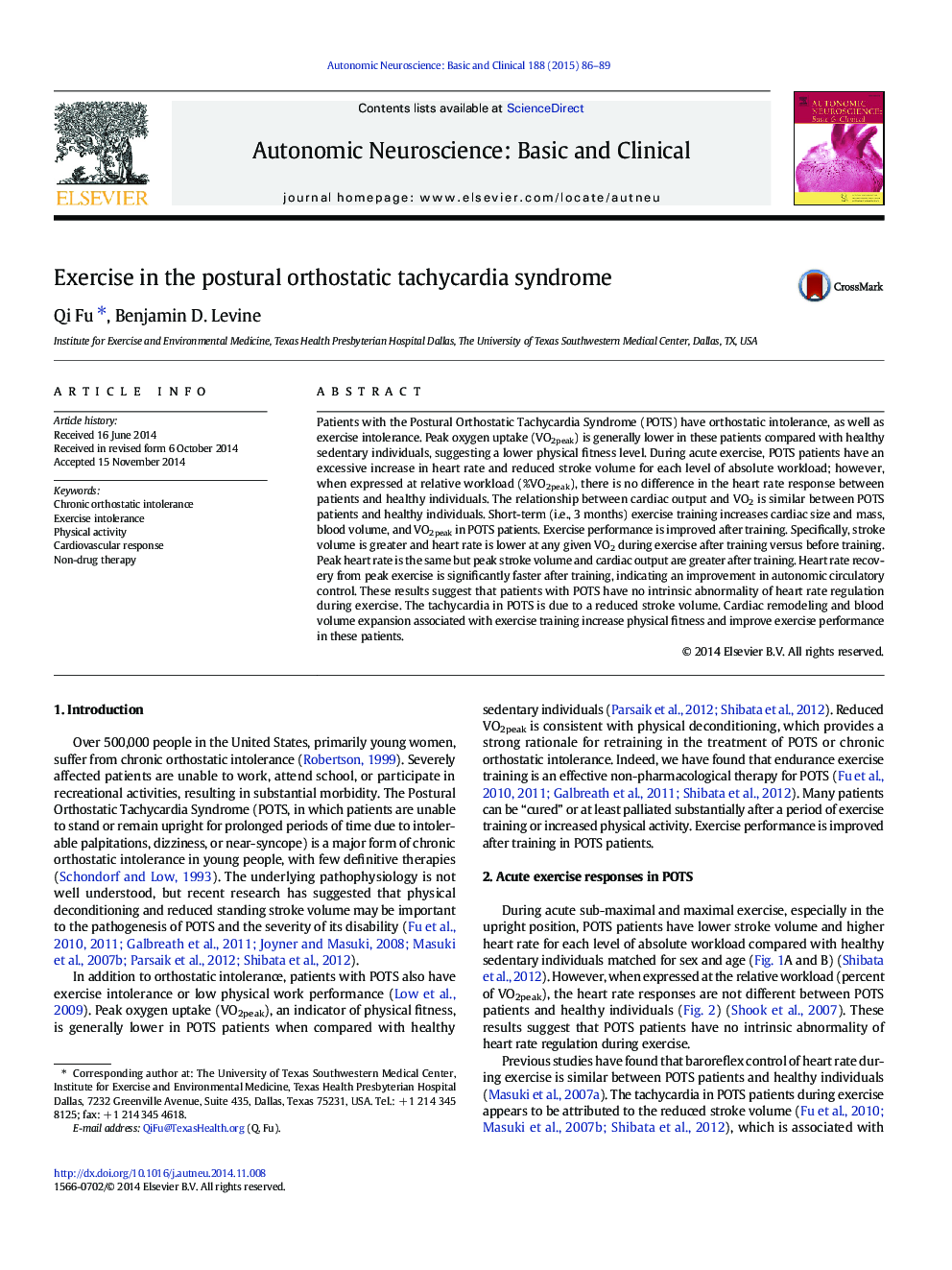| کد مقاله | کد نشریه | سال انتشار | مقاله انگلیسی | نسخه تمام متن |
|---|---|---|---|---|
| 3034628 | 1579527 | 2015 | 4 صفحه PDF | دانلود رایگان |
• Patients with POTS have orthostatic intolerance and exercise intolerance;
• They have an excessive increase in heart rate for each absolute workload during exercise;
• These patients have reduced stroke volume for each absolute workload;
• When expressed at relative workload, there is no difference in the heart rate response between patients and healthy individuals;
• Exercise performance is improved after short-term (3 months) exercise training;
• Stroke volume is greater and heart rate is lower during exercise after training.
Patients with the Postural Orthostatic Tachycardia Syndrome (POTS) have orthostatic intolerance, as well as exercise intolerance. Peak oxygen uptake (VO2peak) is generally lower in these patients compared with healthy sedentary individuals, suggesting a lower physical fitness level. During acute exercise, POTS patients have an excessive increase in heart rate and reduced stroke volume for each level of absolute workload; however, when expressed at relative workload (%VO2peak), there is no difference in the heart rate response between patients and healthy individuals. The relationship between cardiac output and VO2 is similar between POTS patients and healthy individuals. Short-term (i.e., 3 months) exercise training increases cardiac size and mass, blood volume, and VO2peak in POTS patients. Exercise performance is improved after training. Specifically, stroke volume is greater and heart rate is lower at any given VO2 during exercise after training versus before training. Peak heart rate is the same but peak stroke volume and cardiac output are greater after training. Heart rate recovery from peak exercise is significantly faster after training, indicating an improvement in autonomic circulatory control. These results suggest that patients with POTS have no intrinsic abnormality of heart rate regulation during exercise. The tachycardia in POTS is due to a reduced stroke volume. Cardiac remodeling and blood volume expansion associated with exercise training increase physical fitness and improve exercise performance in these patients.
Journal: Autonomic Neuroscience - Volume 188, March 2015, Pages 86–89
